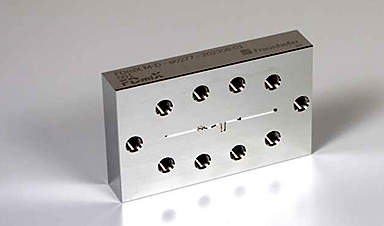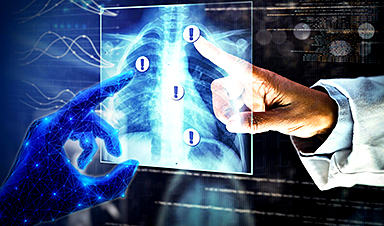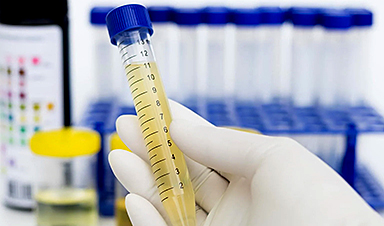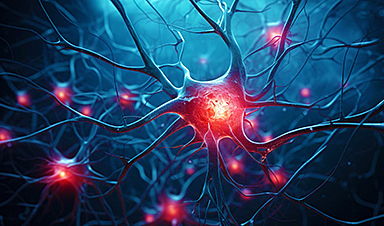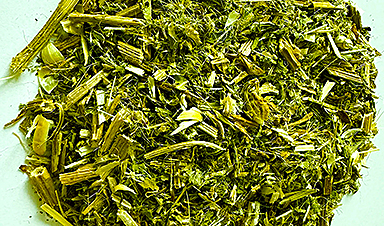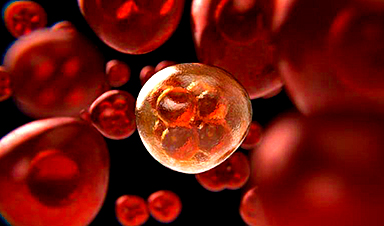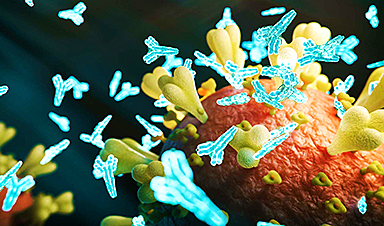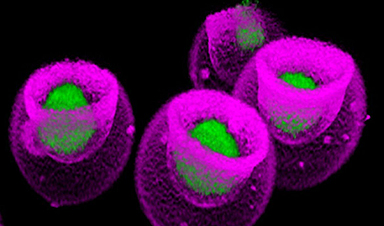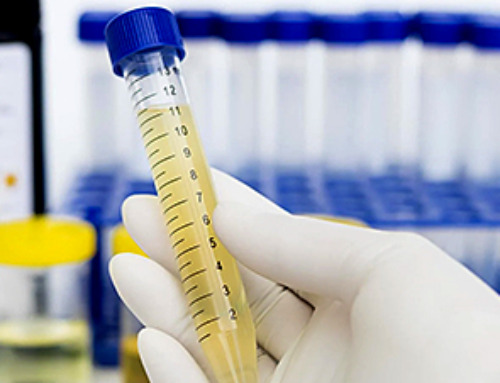Infectious diseases such as COVID-19 can spread rapidly across the globe. Models that can predict how such diseases spread will strengthen national surveillance systems and improve public health decision-making.
A widely used modeling technique involves dividing the population into compartments, such as susceptible (S), infected (I), and recovered (R), in what is known as the SIR model. This approach models the rates of change that describe the movement of individuals from one compartment to another.
KAUST researchers, led by Paula Moraga, integrated SIR compartment modeling in time and a point process modeling approach in space–time, while also taking into account age-specific contact patterns. To do this, they used a two-step framework that allowed them to model data on infectious locations over time for different age groups.
“It also accounts for different age classes so we can treat these groups separately, resulting in finer control over the number of infectious cases.”
Their approach paid off. In a simulation study to assess the model’s performance, and in a case study of COVID-19 cases in Cali, Colombia, the model performed better when making predictions and provided similar results for past time points, compared with models commonly used in predictive modeling.
“The model’s features can help decision-makers to identify high-risk locations and vulnerable populations to develop better strategies for disease control,” says Amaral.
It also can be used with any infectious disease that fits the compartment model assumptions, such as influenza. Furthermore, the model can account for different age groups and their associated contact patterns, meaning it allows more detailed conclusions about where, when, and to which population group decision-makers should focus their resources if they want to control disease spread.
“In future work, we might extend such an approach and use different temporal models to replace the SIR model. This would allow us to account for different epidemic dynamics and expand the number of scenarios that the model can be used for,” says Amaral.
“Finally, to improve the model’s predictive capabilities, we might work on developing ensemble approaches that combine a number of predictions from a number of different models and also account for potential time delays in collecting data,” he adds.
Moraga says the model’s performance demonstrates the importance of quality and detailed data by location, time, and population group to understand infectious disease dynamics while highlighting the need to strengthen national surveillance systems to improve public health decision-making.
News
Developing a tech platform for fast, robust series production of nanoparticles
Nucleic acid-based medications such as mRNA vaccines offer tremendous potential for medicine and are opening up new therapeutic approaches. These active ingredients must be enclosed inside nanoparticles to ensure that they get to where [...]
Unlocking Medical Mysteries: Tyche AI’s Revolutionary Insight Into Ambiguity
By providing plausible label maps for one medical image, the Tyche machine-learning model could help clinicians and researchers capture crucial information. In biomedicine, segmentation involves annotating pixels from an important structure in a medical [...]
Scientists Decode the Molecular Impact of Exercise
MoTrPAC examined the molecular effects of exercise on 2,600 volunteers, incorporating factors like age, race, and gender diversity. Building upon research in rats, MoTrPAC discovered over 35,000 biological molecules responding to endurance exercise and [...]
Prostate Cancer Breakthrough: Urine Test Avoids Unnecessary Biopsies
A study in JAMA Oncology reveals that MyProstateScore 2.0, a new urine test analyzing 18 genes, surpasses PSA in detecting significant prostate cancers and could reduce unnecessary biopsies by up to 42%. A new urine test [...]
Wake Up and Die: New Brain Cell Discovery Could Unlock Alzheimer’s Secrets
This uncommon process is more frequently observed in neurodegenerative diseases and could offer insights into disease mechanisms. According to a new study published in PLOS Biology by Kim Hai-Man Chow and colleagues from the Chinese University [...]
Challenging Old Theories: Innovative Microscopy Exposes New Alzheimer’s Treatment Pathways
Researchers at UC San Diego have utilized advanced imaging techniques to explore the metabolic processes behind Alzheimer’s disease, leading to potential new strategies for treatment. Alzheimer’s disease, the most common type of dementia, significantly impairs [...]
Cambridge Scientists Discover Simple “Twist” That Supercharges Clean Fuel Generation
Scientists have discovered a method to super-charge the ‘engine’ of sustainable fuel generation – by giving the materials a little twist. The researchers, led by the University of Cambridge, are developing low-cost light-harvesting semiconductors that power devices [...]
Completely New Use Discovered – This Traditional Herb Has Remarkable Nerve Regenerative Properties
Blessed thistle (Cnicus benedictus), a member of the Asteraceae family, thrives in our climate. This plant has been utilized for centuries as a medicinal herb, often consumed as an extract or tea to support [...]
Scientists study lipids cell by cell, making new cancer research possible
Imagine being able to look inside a single cancer cell and see how it communicates with its neighbors. Scientists are celebrating a new technique that lets them study the fatty contents of cancer cells, [...]
Antibiotic Breakthrough: Revolutionary Chinese Study Paves Way for Superbug Defeating Drugs
New research reveals that fluorous lipopetides act as highly effective antibiotics. Bacterial infections resistant to multiple drugs, which no existing antibiotics can treat, represent a significant worldwide challenge. A research group from China has [...]
Signs of Multiple Sclerosis Show Up in Blood Years Before Symptoms Appear
UCSF scientists clear a potential path toward earlier treatment for a disease that affects nearly 1,000,000 people in the United States. By Levi Gadye In a discovery that could hasten treatment for patients with multiple [...]
Advanced RNA Sequencing Reveals the Drivers of New COVID Variants
A study reveals that a new sequencing technique, tARC-seq, can accurately track mutations in SARS-CoV-2, providing insights into the rapid evolution and variant development of the virus. The SARS-CoV-2 virus that causes COVID has the unsettling [...]
No More Endless Boosters? Scientists Develop One-for-All Virus Vaccine
End of the line for endless boosters? Researchers at UC Riverside have developed a new vaccine approach using RNA that is effective against any strain of a virus and can be used safely even by babies or the immunocompromised. Every [...]
How Are Hydrogels Shaping the Future of Biomedicine?
Hydrogels have gained widespread recognition and utilization in biomedical engineering, with their applications dating back to the 1960s when they were first used in contact lens production. Hydrogels are distinguished from other biomaterials in [...]
Nanovials method for immune cell screening uncovers receptors that target prostate cancer
A recent UCLA study demonstrates a new process for screening T cells, part of the body's natural defenses, for characteristics vital to the success of cell-based treatments. The method filters T cells based on [...]
New Research Reveals That Your Sense of Smell May Be Smarter Than You Think
A new study published in the Journal of Neuroscience indicates that the sense of smell is significantly influenced by cues from other senses, whereas the senses of sight and hearing are much less affected. A popular [...]

